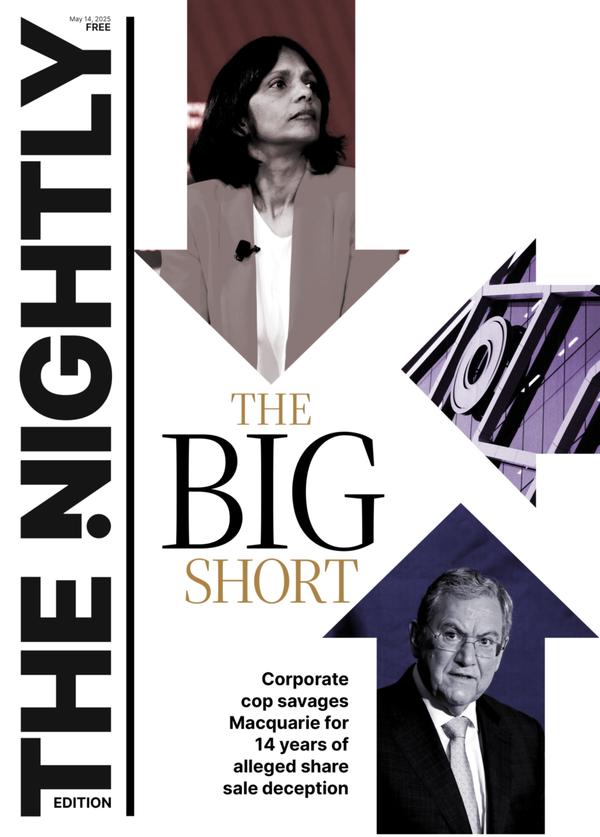Nick Bruining: First Home Super Saver Scheme changes mean couples can now get access to $100,000

Nearly a year after the Federal Government unveiled big changes to the First Home Super Saver Scheme, a start date has finally been revealed.
Potentially, a couple will be able to access nearly $100,000 of tax-deductible savings to be used towards their first home.
First announced in last year’s Federal Budget, legislation approving increased limits to the scheme were passed in September last year, but the enhanced arrangements won’t start to apply until September 15 this year.
Sign up to The Nightly's newsletters.
Get the first look at the digital newspaper, curated daily stories and breaking headlines delivered to your inbox.
By continuing you agree to our Terms and Privacy Policy.The saving scheme is a tax effective way for first-homebuyers to use the tax concessions of the superannuation system to put together a deposit for their first home.
Voluntary contributions of up to $15,000 a year can be made to a super fund, up to the current maximum amount of $30,000. The September 15 changes will lift this limit to $50,000. That means, it would take a little over three years to get to the updated maximum.
The contributions can be either concessional or non-concessional. Users of the scheme can set up a salary sacrifice arrangement, effectively making saving for their deposit tax deductible.
Salary sacrifice is where a member asks their employer to re-direct some of their pre-tax income to superannuation.
A contributions tax of at least 15 per cent still applies to concessional contributions, which means that 85 per cent is left over for “investment”. Non-concessional contributions are not tax deductible but the upside is that the full contribution amount is invested.
In both cases, you’re still restricted by the contribution limits, or “caps”.
For this financial year, the concessional contribution cap is $27,500, which includes compulsory super. The cap for non-concessional contributions is $110,000. If the boss paid in $12,499 under super guarantee rules, you can make up the balance — or $15,000 — leaving you $1 under the cap.
Importantly, you can’t access your employer’s super guarantee payment for the FHSSS, nor contributions made by someone else. In essence, the scheme only applies to the extra amounts you personally paid into super.
Users of the scheme also receive “earnings” on the money invested at a notional interest rate linked to the Australian Tax Office’s Shortfall Interest Charge. It is the ATO’s penalty rate charged to people who owe the ATO money as a result of an amended income tax return. The current annual SIC rate is 7.34 per cent and is re-assessed quarterly.
The sting in this arrangement is that the Government doesn’t actually pay you the earnings. Instead, the FHSSS assumes that the super fund’s earnings will at least cover the SIC earnings rate. If it doesn’t, you still get the money on withdrawal, except that it may be drawing on the remaining reserves of your retirement nest egg.
Withdrawals from super for the purpose of buying your home form part of your taxable income — but with a twist.
The money is taxable at your marginal tax rate in the year you make the withdrawal — but less a 30 per cent tax offset, or credit. The ATO will work that out at the time of withdrawal and withhold the expected tax.
Let’s say, for example, you are in the 37 per cent tax bracket, plus the Medicare levy of 2 per cent. When your FHSSS payment is made, the ATO will know your all-up tax rate is 39 per cent. That — less the 30 per cent offset — means the tax withheld will be 9 per cent.
Importantly, non-concessional contributions, where no tax deduction was claimed, are returned tax free.
To access the money, you first need to contact the ATO to determine how much money you can release under the scheme’s rules. Once you have that information, you then have 12 months to sign the contract for your first home. You then apply to have the money released within 14 days of the contract being signed.
While the 12-month signing requirement can be extended, under the current rules messing up the order risks you losing access to the money saved.
The September 15 rule changes will allow you to make some changes and, sensibly, you’ll be able to sign the contract before you have received a determination from the ATO.
And if you finally decide that breaking into the housing market is just too hard, the money remains in the super fund and is treated like any other contribution, becoming available when you retire.
Nick Bruining is an independent financial adviser and a member of the Certified Independent Financial Advisers Association
Originally published as Nick Bruining: First Home Super Saver Scheme changes mean couples can now get access to $100,000

